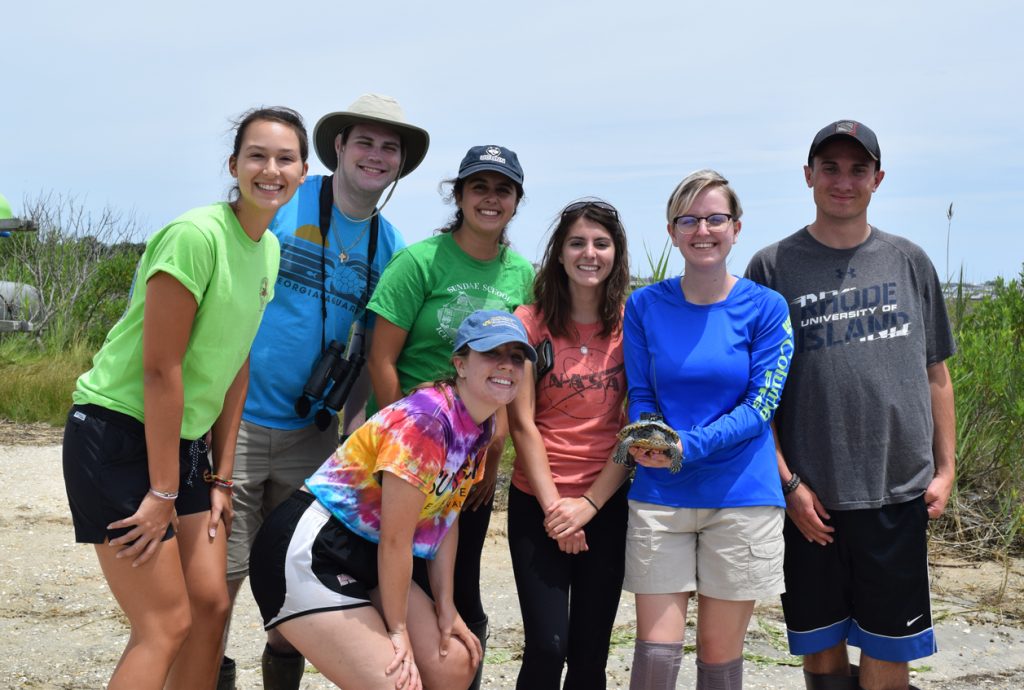
We spent a productive and fun summer with the interns in the Coastal Conservation Research Program. The interns spent time on the marshes, beaches, and roads contributing to our ongoing monitoring projects; delved into independent research projects of their own; and gained new experience with data collection techniques, analytical approaches, and science communication to take forward in their careers. Their accomplishments over the course of the 10-week program were impressive, and they push us to learn and improve the work of our department.
Pictured left to right: Aileen Lavelle (front), Emilie Karovic, Tully Frain, Jamie Infanti, Amanda Lyons (undergraduate visiting researcher), Jess Klein, Zachary Hulmes.
Intern Projects Overview
Tully Frain, a 2019 graduate of the University of Connecticut, conducted surveys to identify territories and nests of secretive marsh-nesting sparrows, and characterized vegetation, elevation, and location of nests to improve future monitoring and conservation efforts.
Zachary Hulmes, a rising senior at the University of Rhode Island, examined spatial and temporal trends in road crossings of Diamondback Terrapins in relation to conservation measures on Stone Harbor Boulevard over a three-year period.
Jamie Infanti, a 2019 graduate of the University of Connecticut and second-year CCRP intern, continued research on Common Terns, exploring the relationship of vegetation and nest density to nest survival in a year with high predation pressure.
Emilie Karovic, a rising junior at the University of Connecticut, explored saltmarsh pannes to learn more about the role they play in Terrapin movements, particularly for gravid adult females during the nesting season.
Jessica Klein, a rising senior at Stockton University, monitored a newly constructed nest mound for Terrapins to identify benefits and issues, and proposed modifications to enhance effectiveness, including a new barrier fence design she trialed.
Aileen Lavelle, a rising junior at the University of California, Berkeley, modeled maximum water depth and temperature in the marsh over two years to examine inter- and intra-annual differences, and potential implications for marsh-dwelling species such as Terrapins.
